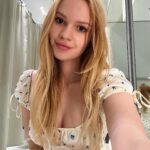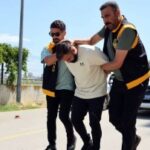Texture plays a vital role in interior design, often transforming a flat, lifeless room into a vibrant and engaging space. While colour, furniture, and layout are commonly discussed, texture is the unsung hero that can elevate the design of any room.
Here’s an exploration of the importance of texture in interior design, its role in creating visually appealing spaces, and how learning about textures through an interior design course can enhance your creative abilities.
The Role of Texture in Interior Design
Creating Visual Interest
Texture adds visual interest to a room by providing contrast and dimension. Smooth and rough surfaces, shiny and matte finishes, and soft and hard materials all contribute to a rich, layered look. For instance, a sleek, modern sofa paired with a chunky knit throw or a glass coffee table with a rustic wooden floor creates an engaging contrast that catches the eye. These combinations prevent a room from feeling monotonous and encourage a more dynamic interaction with the space.
Enhancing Mood and Atmosphere
Different textures can evoke various emotions and set the mood of a room. Soft, plush textures like velvet or faux fur can create a sense of luxury and comfort, perfect for a cosy living room or bedroom. In contrast, rougher textures such as exposed brick or reclaimed wood bring a more rugged, earthy feel, ideal for creating a rustic or industrial vibe. By carefully selecting textures, designers can influence the ambience of a space, making it feel warm and inviting or sleek and sophisticated.
Adding Depth and Dimension
Texture is crucial in adding depth to a room, making it appear more layered and complex. Flat, single-texture surfaces can make a space look two-dimensional and bland. Incorporating various textures, from fabrics to wall finishes and decorative accessories, can create a three-dimensional effect that makes a room feel more substantial and exciting. For example, a room with textured wallpaper, a variety of fabrics on furniture, and a mix of materials in decor items will have a richer, more engaging look.
Balancing a Design
Texture can also help balance a design by counteracting the effects of other elements. For instance, a room dominated by hard surfaces like glass and metal can feel cold and unwelcoming. Introducing soft textures such as cushions, rugs, and curtains can soften the overall look and make the space more inviting. Similarly, in a room filled with smooth, plush textures, adding a few sleek, hard elements can prevent it from feeling overly cosy or cluttered.
Practical Applications of Texture
Walls and Ceilings
Textures can be applied to walls and ceilings through materials like textured paint, wallpaper, wood panelling, and exposed brick. These elements can serve as focal points in a room, adding character and interest. For example, a feature wall with textured wallpaper can draw attention and create a sense of depth, while a ceiling with wooden beams can add a rustic charm.
Furniture and Upholstery
Furniture pieces offer a prime opportunity to introduce texture into a room. Upholstered furniture in various fabrics, such as linen, leather, or velvet, can add tactile interest and visual contrast. Mixing different textures in furniture, like pairing a leather sofa with a knitted pouffe, can create a dynamic and balanced look.
Accessories and Decor
Decorative accessories are another way to incorporate texture. Items like cushions, throws, rugs, and curtains come in a wide range of textures, allowing for endless possibilities. Additionally, smaller decor pieces like vases, sculptures, and picture frames in various materials can contribute to the overall texture of a room.
Flooring
Flooring options such as hardwood, tile, carpet, and rugs provide a foundation for introducing texture. Layering rugs on hardwood floors, for example, can add warmth and softness, while textured tiles in a bathroom or kitchen can provide a unique, tactile experience underfoot.
Learning About Texture Through an Interior Design Course
An interior design course can be incredibly beneficial in learning how to effectively use texture in your designs. These courses provide a comprehensive understanding of various materials and their applications, allowing aspiring designers to experiment with different textures and discover what works best in different spaces.
Understanding Materials
These courses cover various materials, from natural options like wood and stone to synthetic ones like acrylic and vinyl. Students learn about the properties, benefits, and drawbacks of each material, helping them make informed decisions when selecting textures for their designs. This knowledge is crucial in creating balanced and aesthetically pleasing interiors.
Practical Experience
Courses often include hands-on projects where students can experiment with different textures and materials. This practical experience is invaluable in understanding how textures interact with each other and the overall design. By working on real-life projects, students can develop a keen eye for texture and learn how to use it effectively to enhance their designs.
Design Principles
Understanding the principles of design, such as balance, contrast, and harmony, is essential in effectively using texture. These courses teach these principles in depth, providing a solid foundation for creating cohesive and visually appealing spaces. By learning how to balance different textures, students can create interesting and harmonious designs.
Inspiration and Creativity
Exposure to various styles and trends through coursework can inspire students to think creatively about texture. By studying different design approaches and seeing how professionals use texture in their work, students can develop their unique style and approach to incorporating texture into their designs.
Texture is an essential element in interior design, adding depth, interest, and tactile quality to spaces. By understanding the role of texture and learning how to use it effectively, designers can create dynamic and engaging interiors. Embracing texture in interior design can transform any room, making it more appealing and inviting.















